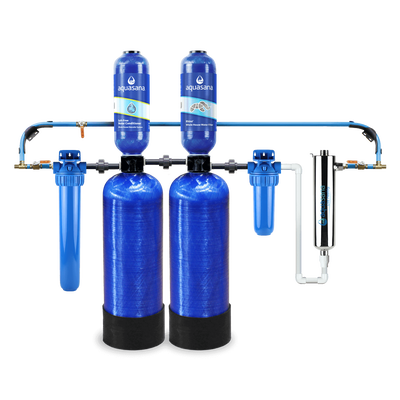4 Simple Techniques For Filtering Well Water For Drinking
Table of ContentsHome Water Filter Installation Things To Know Before You Get ThisFiltering Well Water For Drinking - The FactsThe smart Trick of Home Water Filter Installation That Nobody is Talking About8 Easy Facts About Best Reverse Osmosis System For Drinking Water Described
If you have an electronic camera readily available, take an image of all your remedies prior to starting the purification. This will certainly be handy for your screen board. Ensure that all the pictures are taken with the same illumination, background, as well as electronic camera setups (it is most likely best to utilize a white background) so you can compare them to each various other.Beginning with the filtration experiment making use of granular triggered carbon. Pour each focus of the prepared dye remedies right into the particular mugs including the granular activated carbon that you prepared in action 2 of "Preparing Your Examples and also Filters".

After 10 minutes, put the water and also carbon blend into the filters that you prepared symphonious 3 of "Preparing Your Examples and also Filters," and also let the water seep with the filters. Note: Make sure that the water drains out of the filters entirely as well as gathers in the cup listed below the filter.
If the the water degree reaches the bottom of the filter once it has seeped through, either choose a larger cup or use much shorter, basket shaped coffee filters rather of the longer, cone-shaped ones. Next, continue with the filtering experiment making use of powdered turned on carbon. Gradually pour each focus of the ready dye solutions into the particular cups having the powdered activated carbon that you prepared in action 2 of "Preparing Your Samples and Filters".
5 Easy Facts About Filtering Well Water For Drinking Shown
Set your timer to 10 minutes and rapidly mix each service with the turned on carbon utilizing a clean spoon (filtering well water for drinking). After 10 mins pour the water and also powdered carbon combination onto the filters that you prepared symphonious 3 of "Preparing Your Examples and Filters" and also let the water seep through the filters.
For the filtration experiment utilizing no turned on carbon, put each of the ready water examples onto the filtering mugs gotten ready for this condition in action 3 of "Preparing Your Examples and also Filters". Once again, allow the water seep with the filters totally. Let the options in each cup seep through the 4 layers of coffee filter.
If you have a video camera available, take a photo of all the services that you accumulated in the filtration cups after the filtration experiment. uv light water filtration. Once more, this will certainly be useful for your display board. Make sure that all the photos are taken with the very same lighting, background, as well as electronic camera settings that you used in action 6 (it is possibly best to use a white history) so you can home water filter installation contrast them per other.
Liable scientists constantly do their experiments at the very least three times to verify that their outcomes are always revealing the same trend, suggesting that they are reproducible. Evaluating Your Information Determine the typical shade rating for each of your water samples after therapy. To do this, for each of your samples add the color worths from each individual test and after that divide the result by 3.
5 Easy Facts About Filtering Well Water For Drinking Described
Contrast the ordinary shade values that you listed for each experimental problem before and also after the purification. Can you see a pattern in your data? Did your water samples come to be much less colored or perhaps colorless after filtering? Did the filtration product or the color concentration make a difference? Advanced trainees can do even more measurable measurements of the water colors, utilizing a shade picker tool online.
You can utilize the left-over color options that you prepared initially as recommendation for the "prior to therapy" samples. The tool offers you color worths for H (Shade), S (Saturation), B (Brightness) as well as R (Red), G (Green) as well as B (Blue). Keep within the same Hue for your shade assessment (keeping the arrow on the appropriate bar taken care of at one setup) and for every picked shade document the shade saturation (S) and brightness (B) value.

You can either make a different chart for each and every dye concentration or utilize one bar graph with different colors indicating the various color concentrations. The Bibliography checklists an on the internet graphing tool that can help you develop graphs. If you chose to use the color choosing device, make another chart comparable to that in step 4, but this time around plot your average saturation values on the y-axis.
Getting My Uv Light Water Filtration To Work
Repeat this experiment however this time vary the quantity of triggered carbon you place right into your filters. You can either pick another amount of activated carbon for the different dye concentrations, or keep the dye focus constant as well as differ the amount of triggered carbon instead.
